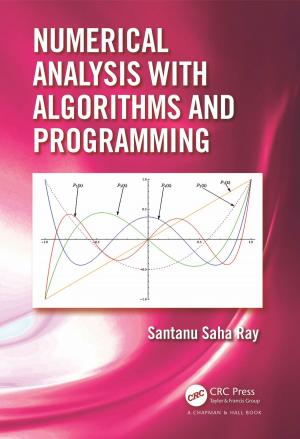SPICE for Power Electronics and Electric Power
Nonfiction, Science & Nature, Technology, Electronics, Circuits| Author: | Muhammad H. Rashid | ISBN: | 9781351833042 |
| Publisher: | CRC Press | Publication: | December 19, 2017 |
| Imprint: | CRC Press | Language: | English |
| Author: | Muhammad H. Rashid |
| ISBN: | 9781351833042 |
| Publisher: | CRC Press |
| Publication: | December 19, 2017 |
| Imprint: | CRC Press |
| Language: | English |
Power electronics can be a difficult course for students to understand and for professors to teach. Simplifying the process for both, SPICE for Power Electronics and Electric Power, Third Edition illustrates methods of integrating industry standard SPICE software for design verification and as a theoretical laboratory bench.
Helpful PSpice Software and Program Files Available for Download
Based on the author Muhammad H. Rashid’s considerable experience merging design content and SPICE into a power electronics course, this vastly improved and updated edition focuses on helping readers integrate the SPICE simulator with a minimum amount of time and effort. Giving users a better understanding of the operation of a power electronics circuit, the author explores the transient behavior of current and voltage waveforms for each and every circuit element at every stage. The book also includes examples of all types of power converters, as well as circuits with linear and nonlinear inductors.
New in this edition:
-
Student learning outcomes (SLOs) listed at the start of each chapter
Changes to run on OrCAD version 9.2
Added VPRINT1 and IPRINT1 commands and examples
Notes that identify important concepts
Examples illustrating EVALUE, GVALUE, ETABLE, GTABLE, ELAPLACE, GLAPLACE, EFREQ, and GFREQ
Mathematical relations for expected outcomes, where appropriate
The Fourier series of the output voltages for rectifiers and inverters
PSpice simulations of DC link inverters and AC voltage controllers with PWM control
This book demonstrates techniques of executing power conversions and ensuring the quality of the output waveforms rather than the accurate modeling of power semiconductor devices. This approach benefits students, enabling them to compare classroom results obtained with simple switch models of devices. In addition, a new chapter covers multi-level converters.
Assuming no prior knowledge of SPICE or PSpice simulation, the text provides detailed step-by-step instructions on how to draw a schematic of a circuit, execute simulations, and view or plot the output results. It also includes suggestions for laboratory experiments and design problems that can be used for student homework assignments.
Power electronics can be a difficult course for students to understand and for professors to teach. Simplifying the process for both, SPICE for Power Electronics and Electric Power, Third Edition illustrates methods of integrating industry standard SPICE software for design verification and as a theoretical laboratory bench.
Helpful PSpice Software and Program Files Available for Download
Based on the author Muhammad H. Rashid’s considerable experience merging design content and SPICE into a power electronics course, this vastly improved and updated edition focuses on helping readers integrate the SPICE simulator with a minimum amount of time and effort. Giving users a better understanding of the operation of a power electronics circuit, the author explores the transient behavior of current and voltage waveforms for each and every circuit element at every stage. The book also includes examples of all types of power converters, as well as circuits with linear and nonlinear inductors.
New in this edition:
-
Student learning outcomes (SLOs) listed at the start of each chapter
Changes to run on OrCAD version 9.2
Added VPRINT1 and IPRINT1 commands and examples
Notes that identify important concepts
Examples illustrating EVALUE, GVALUE, ETABLE, GTABLE, ELAPLACE, GLAPLACE, EFREQ, and GFREQ
Mathematical relations for expected outcomes, where appropriate
The Fourier series of the output voltages for rectifiers and inverters
PSpice simulations of DC link inverters and AC voltage controllers with PWM control
This book demonstrates techniques of executing power conversions and ensuring the quality of the output waveforms rather than the accurate modeling of power semiconductor devices. This approach benefits students, enabling them to compare classroom results obtained with simple switch models of devices. In addition, a new chapter covers multi-level converters.
Assuming no prior knowledge of SPICE or PSpice simulation, the text provides detailed step-by-step instructions on how to draw a schematic of a circuit, execute simulations, and view or plot the output results. It also includes suggestions for laboratory experiments and design problems that can be used for student homework assignments.















